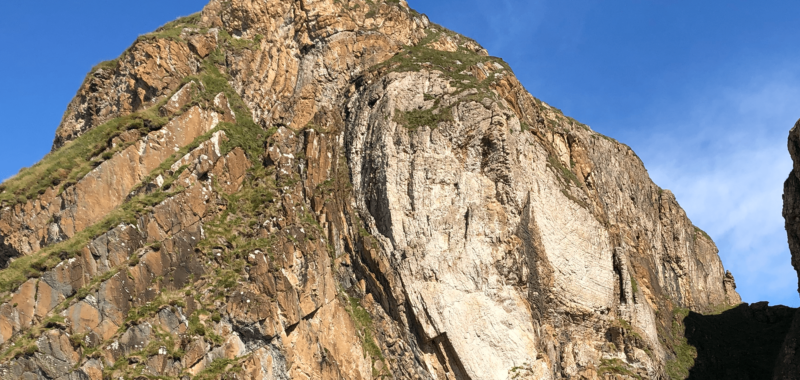Our planet used to be a snowball. Roughly 635 and 720 million years ago, Earth was completely covered in thick ice. While somewhat barren at the time, this period eventually proved to be crucial for hosting complex life on Earth. Now, an international team of scientists believe that they have found the most complete geological record of “snowball Earth” in Scotland and Ireland’s Port Askaig Formation. This enormous rock group was likely laid down between 662 to 720 million years ago, just before a big boom in life. The findings are detailed in a study published August 15 in the Journal of the Geological Society of London.
“These rocks record a time when Earth was covered in ice,” study co-author and University College London geologist Graham Shields said in a statement. “All complex, multicellular life, such as animals, arose out of this deep freeze, with the first evidence in the fossil record appearing shortly after the planet thawed.”
[Related: ‘Dark’ archaeologists scour melting ice for ancient artifacts.]
Ice breeds life?
The unique rocks in this study date back to the 60 million years-long Sturtian glaciation. This is one of two big freezes during the Cryogenian Period (between 635 and 720 million years ago). For billions of years before the Cryogenian, the planet was much warmer, but life on Earth primarily consisted of single-celled organisms and algae.
Complex life likely began to emerge after this deep freeze. Most animals living today are similar in some fundamental ways to the life forms that evolved over 500 million years ago. One prevailing theory behind this explosion of life is that the extreme cold may have prompted the emergence of altruism. Single-celled organisms somehow learned to cooperate with each other, thus forming multicellular life.
Both the advance and retreat of the ice across Earth is believed to have happened over thousands of years–relatively quickly in geologic terms. The speed is likely due to the albedo effect, where the more ice there is, the more sunlight is reflected back into space and vice versa.
“The retreat of the ice would have been catastrophic. Life had been used to tens of millions of years of deep freeze,” said Shields. “As soon as the world warmed up, all of life would have had to compete in an arms race to adapt. Whatever survived were the ancestors of all animals.”
[Related: First rocks recovered from Earth’s mantle.]
Yesterday’s ice leads to today’s rocks
To search for hard evidence of this time period, the team looked to the Port Askaig Formation. This rock formation spans present day Ireland and Scotland and is made up of several layers that are up to a half mile thick in some spots.
One exposed outcrop on a group of Scottish islands called the Garvellachs contains geological evidence of our planet’s transition from warm and tropical into a frozen snowball during the Sturtian glaciation. By comparison, other rocks that formed at a similar time in North America and Africa do not show this climate transition.

“The layers of rock exposed on the Garvellachs are globally unique. Underneath the rocks laid down during the unimaginable cold of the Sturtian glaciation are 70 meters [229 feet] of older carbonate rocks formed in tropical waters,” study co-author and UCL PhD candidate Elias Rugen said in a statement. “These layers record a tropical marine environment with flourishing cyanobacterial life that gradually became cooler, marking the end of a billion years or so of a temperate climate on Earth.”
The team collected samples of sandstone from the Port Askaig Formation and from an older, 229-feet thick Garbh Eileach Formation underneath it. They analyzed small durable minerals called zircons. These minerals are crucial for dating rocks–even on the moon–since they have the radioactive element uranium. This element decays at a steady rate, so geologists can get a sense of how old the rocks are by this decay rate. The zircons and other geochemical evidence suggest that the rocks were deposited here between 662 and 720 million years ago.
According to the team, the new dating for the rocks could provide the evidence to officially declare this site as a marker for the start of the Cryogenian Period in the geologic record. Known as the Global Boundary Stratotype Section and Point (GSSP), some scientists refer to this marker as a golden spike since spikes are sometimes driven into the rock to mark the boundary. The International Union of Geological Sciences is currency reviewing if the outcropping in the Garvellachs will get a golden spike.

